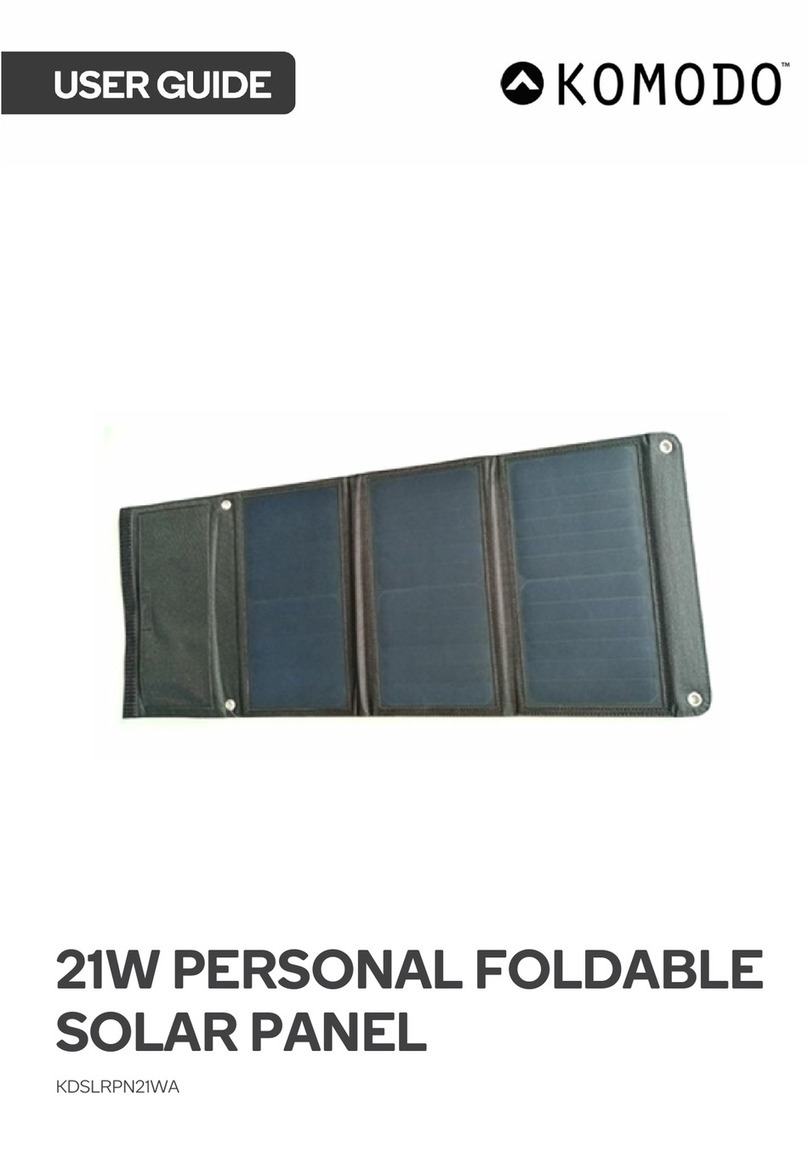7. Always adhere to the battery manufacturer's recommendations when charging the
battery.
8. Given sufficient light, solar panels will always generate energy, even when they are
disconnected. Accidental shortage of the terminals or wiring can result in sparks, causing
personal injury or fire.
9. This unit is not intended for use by children or by people suffering any disabilities that
may restrict them from taking actions to avert dangers in a timely manner.
10. Always avoid charging an old, damaged, overly discharged or defective battery.
11. When testing or working around batteries, it is advisable to wear protective eyewear.
12. Have plenty of fresh water and soap available in the event that battery acid comes into
contact with skin, eyes or clothing.
13. If battery acid does come into contact with skin or clothing, flush immediately with large
amounts of water. If battery acid comes into contact with eyes, then flush the eyes with
clean water for at least 15 minutes. The eye should be completely submerged and kept
open. See a doctor immediately. Do not use eye drops or any other medications unless
instructed to do so by a doctor.
14. When working with lead-acid batteries, be careful not to short-out the battery with a
metal tool or object. Remove all personal items such as watches, rings, bracelets and
necklaces. The possibility of short circuits exist, which can damage such items and result
in severe burns.
15. Keep the solar panel away from water, acids or alkalis.
16. Keep the surface of the solar panels clean from dust by cleaning it with a soft, dry cloth.
Do not walk on the panels.
17. Do not scratch or bend solar panels.
18. Do not disassemble or open the solar panels or the controller. There are no user-
serviceable parts in this unit.
19. When mounting the solar panels, adhere to all relevant safety regulations.
20. Do not pack heavy items on top of the solar panels when storing or transporting.
Programming Mode
This controller uses an intelligent automatic system to charge the battery, then turn lights on at
dusk and then off after 3 hours by default.
The unit is preset for a standard wet-cell 12-24V lead acid battery, however if a Gel-cell battery is
connected it will automatically detect it.
You can manually set the battery voltage, or change the load to stay on for a longer time from
3-9 hours, or always output the load.
Battery Voltage
U00, U12, U24
Options
•U00 : (Default) Autodetect the battery voltage
•U12 : For use with a 12V battery and load system
•U24 : For use with a 24V load and battery system
Operation Mode for running lamps, regular Day/Night mode
1F0, 1F3, 1F4, 1F5, 1F6, 1F7, 1F8, 1F9
Options
•1F0 - This is the “always on” power mode.
•1F3 - 3F9 - Time for load to be active after sunset (in hours)
If you select the always-on power mode, the output will always be supplied with power,
regardless of the timed brightness settings, unless the battery level reaches the low voltage cut-
out level.
4

























